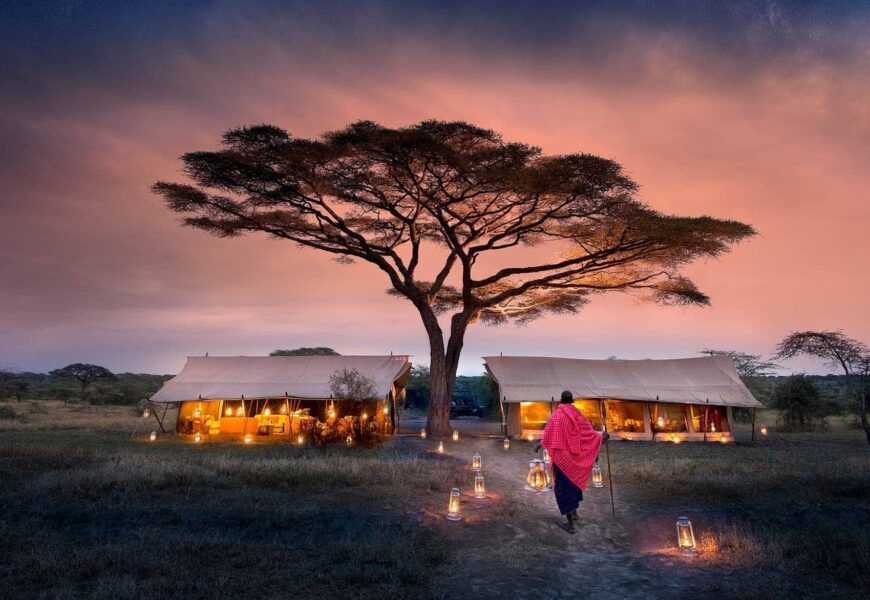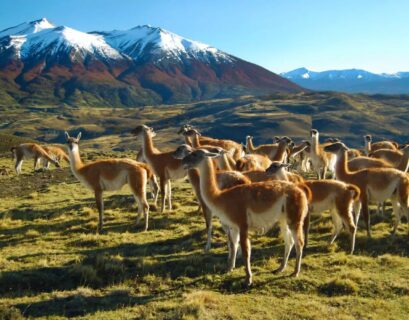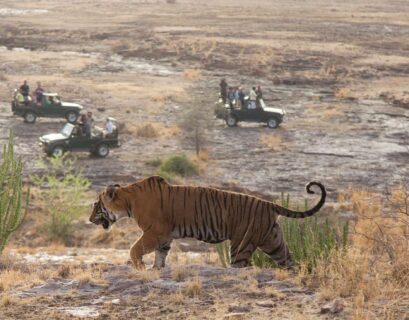Serengeti National Park, located in northern Tanzania, is one of the most renowned wildlife sanctuaries in the world. Spanning approximately 12,000 square miles, the Serengeti is celebrated for its vast savannas, incredible biodiversity, and the awe-inspiring Great Migration. This introduction to Serengeti National Park explores the park’s unique features, rich wildlife, and the unforgettable experiences it offers to visitors.
A Land of Endless Plains
The name “Serengeti” is derived from the Maasai word “Siringit,” which means “endless plains.” This aptly describes the park’s expansive grasslands that stretch as far as the eye can see. The Serengeti’s landscape is a mosaic of grasslands, woodlands, and riverine forests, creating diverse habitats that support a wide range of flora and fauna.
The park’s central region, known as the Seronera Valley, is characterized by rolling grasslands dotted with acacia trees and granite kopjes (rock formations). These kopjes provide shelter and lookout points for predators like lions and leopards. The western corridor features the Grumeti River, home to large populations of hippos and crocodiles, while the northern section borders Kenya’s Maasai Mara and is known for its river crossings during the Great Migration.
The Great Migration: A Natural Spectacle
One of the most extraordinary events in the Serengeti is the annual Great Migration. This natural phenomenon involves over 1.5 million wildebeest, 200,000 zebras, and numerous other herbivores moving in a circular pattern between Tanzania’s Serengeti and Kenya’s Maasai Mara in search of fresh grazing land and water. The migration is driven by seasonal rains and is a continuous cycle of birth, life, and death.
The migration typically begins in the southern Serengeti, where calving season occurs from January to March. During this time, thousands of wildebeest calves are born, providing a feast for predators. As the dry season sets in, the herds move northwest towards the Grumeti River around June, where they face the perilous task of crossing crocodile-infested waters.
The migration then continues northwards to the Maasai Mara from July to October, where the herds face yet another dangerous river crossing at the Mara River. By November, the herds start their journey back to the southern Serengeti, completing the cycle. Witnessing the Great Migration is a once-in-a-lifetime experience, showcasing nature’s raw and dramatic beauty.
Rich Wildlife and Biodiversity
Serengeti National Park is home to an incredible array of wildlife, making it one of the best places for game viewing in Africa. In addition to the iconic wildebeest and zebra herds, the park boasts a high concentration of predators, including lions, leopards, cheetahs, and hyenas. The Serengeti is particularly famous for its large lion prides, which can often be seen lounging on the kopjes or stalking prey in the grasslands.
Elephants, giraffes, buffaloes, and rhinos can also be found in the park, contributing to the Big Five game animals that many visitors hope to see. Birdwatchers will be delighted by the Serengeti’s avian diversity, with over 500 bird species recorded, including ostriches, eagles, and the colorful lilac-breasted roller.
Cultural Heritage
The Serengeti region is not only rich in wildlife but also in cultural heritage. The Maasai people, with their distinctive customs and dress, have lived in harmony with the wildlife for centuries. Visitors can learn about Maasai culture through village visits and cultural tours, gaining insight into their traditional way of life and deep connection to the land.
Exploring the Serengeti
Serengeti National Park offers a variety of ways to explore and experience its natural wonders. Game drives are the most popular, providing opportunities to see wildlife up close. Early morning and late afternoon drives are particularly rewarding, as animals are most active during these times.
For a unique perspective, hot air balloon safaris offer a bird’s-eye view of the vast plains and wildlife below. Gliding silently over the Serengeti at sunrise is an unforgettable experience, often followed by a champagne breakfast in the bush.
Guided walking safaris provide a more intimate way to explore the park, allowing visitors to learn about the smaller details of the ecosystem, such as plants, insects, and animal tracks. These walks are led by knowledgeable guides who share their expertise and passion for the Serengeti’s natural world.
Conservation Efforts
Serengeti National Park is a UNESCO World Heritage Site and a vital conservation area. Efforts to protect its unique ecosystem and wildlife are ongoing, with initiatives to combat poaching, manage human-wildlife conflict, and promote sustainable tourism. The Serengeti ecosystem’s health is crucial not only for Tanzania’s biodiversity but also for global conservation efforts.
Planning Your Visit
The best time to visit Serengeti National Park depends on what you want to see. For the Great Migration, timing is key. The calving season from January to March is excellent for witnessing newborn animals and predator interactions. The river crossings in the Grumeti (June-July) and Mara (July-October) are dramatic but can be crowded with tourists.
The Serengeti is a year-round destination, with each season offering unique experiences. The dry season (June-October) is ideal for game viewing as animals gather around water sources, while the wet season (November-May) brings lush landscapes and fewer tourists.
Conclusion
Serengeti National Park is a treasure trove of natural wonders, offering visitors an unparalleled opportunity to witness one of the greatest wildlife spectacles on earth. From the breathtaking Great Migration to the rich biodiversity and cultural heritage, the Serengeti captivates and inspires all who visit. Whether you’re an avid wildlife enthusiast, a photographer, or someone seeking a once-in-a-lifetime adventure, the Serengeti promises an unforgettable experience in the heart of Africa.









